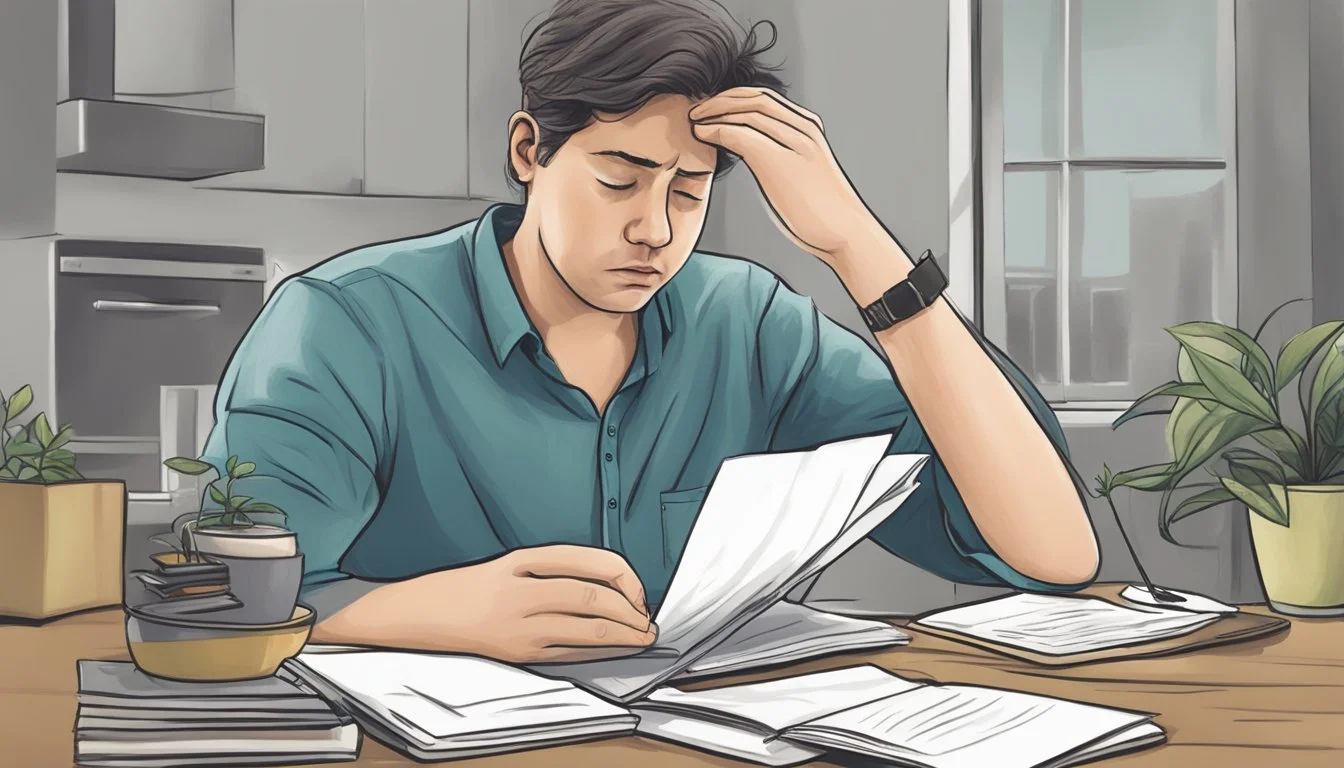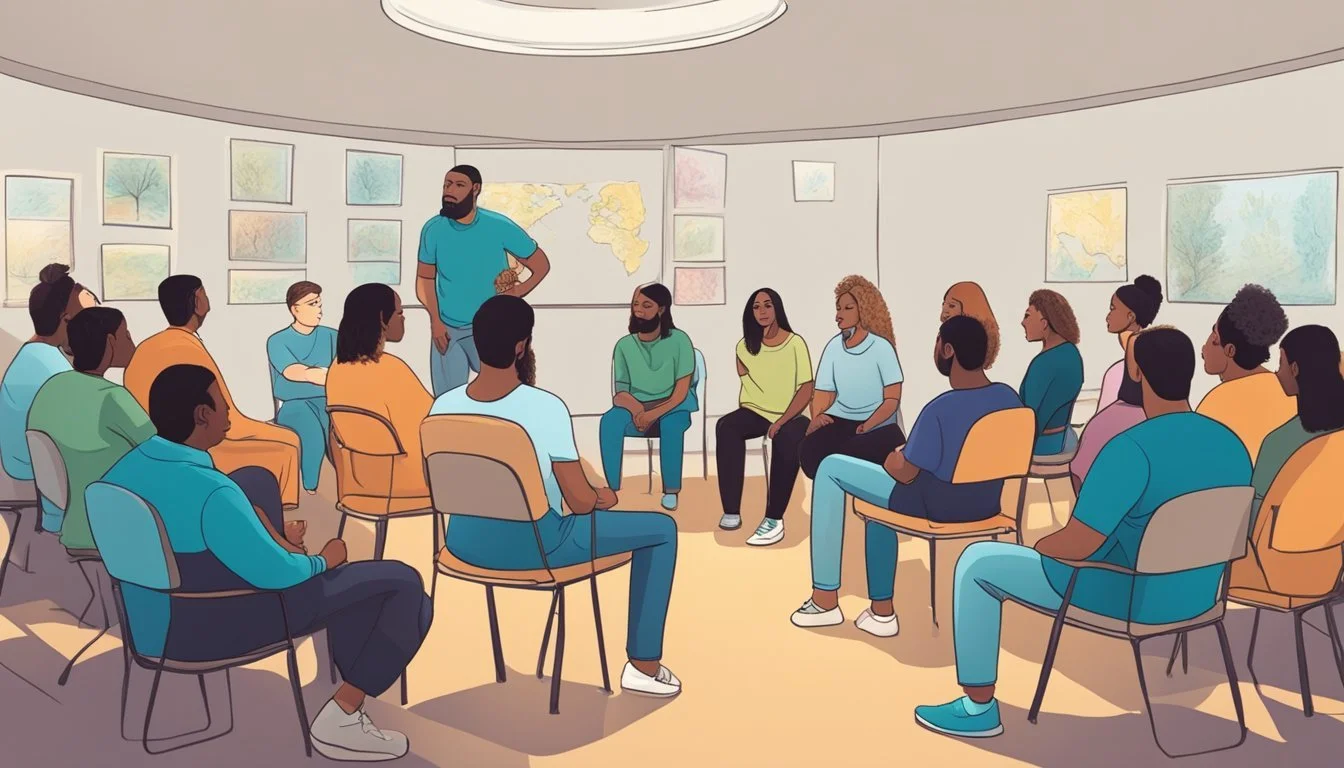Comparing Symptoms of Trauma and Mood Disorders
PTSD and bipolar disorder are distinct mental health conditions with some overlapping symptoms. While both can significantly impact a person's daily life and well-being, they have different underlying causes and characteristic features.
PTSD is specifically linked to traumatic experiences, whereas bipolar disorder is a mood disorder characterized by alternating episodes of mania and depression. This fundamental difference in origin and presentation is crucial for accurate diagnosis and effective treatment.
Despite their differences, PTSD and bipolar disorder can share certain symptoms, such as mood swings, irritability, and difficulty concentrating. In some cases, individuals may even experience both conditions simultaneously, adding complexity to their mental health journey. Understanding the unique aspects of each disorder is essential for healthcare providers and patients alike to navigate the path to proper care and management.
Defining PTSD and Bipolar Disorder
Post-Traumatic Stress Disorder (PTSD) and Bipolar Disorder are distinct mental health conditions with unique characteristics and triggers. While both can significantly impact a person's life, they differ in their core symptoms and underlying causes.
Characteristics of PTSD
PTSD is a trauma-based disorder that develops after experiencing or witnessing a traumatic event. Common triggers include combat exposure, natural disasters, accidents, or sexual violence.
Symptoms of PTSD include:
Intrusive memories or flashbacks
Avoidance of trauma-related stimuli
Negative changes in mood and cognition
Hyperarousal and heightened reactivity
PTSD symptoms are typically consistent and directly related to the traumatic experience. The condition can cause significant distress and impair daily functioning.
Characteristics of Bipolar Disorder
Bipolar Disorder is a mood disorder characterized by alternating episodes of mania and depression. Unlike PTSD, it is not necessarily triggered by external events.
Key features of Bipolar Disorder include:
Manic episodes: Periods of elevated mood, increased energy, and risky behavior
Depressive episodes: Periods of low mood, decreased energy, and loss of interest
Cyclical pattern: Mood swings between these two extremes
Bipolar episodes can last for days, weeks, or months. The severity and frequency of episodes vary among individuals. During stable periods, some people may experience relatively normal moods.
Etiology and Causes
PTSD and bipolar disorder have distinct underlying causes, though both involve complex interactions of biological and environmental factors. Traumatic experiences play a central role in PTSD, while genetic predisposition is more prominent in bipolar disorder.
Root Causes of PTSD
PTSD develops after exposure to traumatic events that threaten one's safety or life. Common triggers include:
Combat exposure
Sexual assault or abuse
Serious accidents
Natural disasters
Witnessing death or violence
Not everyone exposed to trauma develops PTSD. Risk factors include:
History of anxiety or depression
Lack of social support
Additional life stressors
Previous traumatic experiences
Brain changes occur in PTSD, affecting areas involved in fear and stress responses. This can lead to hypervigilance and intrusive memories.
Biological Factors in Bipolar Disorder
Genetic factors play a significant role in bipolar disorder. Having a close relative with the condition increases one's risk. Specific genes linked to bipolar disorder affect:
Neurotransmitter systems
Circadian rhythms
Stress response
Environmental triggers can activate genetic predispositions:
Major life changes
Substance abuse
Sleep disruptions
Seasonal changes
Brain imaging studies show differences in bipolar brains, particularly in areas regulating mood and impulse control. These biological factors contribute to the characteristic mood swings and energy fluctuations seen in bipolar disorder.
Symptomatology
PTSD and bipolar disorder have distinct symptom profiles, though some overlap exists. Understanding the key symptoms of each condition is crucial for accurate diagnosis and treatment.
PTSD Symptoms
PTSD symptoms typically revolve around a traumatic event. Individuals may experience intrusive memories or flashbacks of the trauma. Nightmares related to the event are common, often disrupting sleep patterns.
Avoidance behaviors are prevalent. People with PTSD may actively avoid places, people, or situations that remind them of the traumatic experience. They might also struggle with emotional numbing or detachment from others.
Hypervigilance is another hallmark symptom. Those affected may be easily startled or constantly on edge. Irritability and angry outbursts can occur frequently.
Cognitive symptoms include difficulty concentrating and memory problems, particularly regarding aspects of the traumatic event.
Symptoms of Bipolar Disorder
Bipolar disorder is characterized by alternating episodes of mania and depression. During manic episodes, individuals experience:
Increased energy and activity
Reduced need for sleep
Racing thoughts and rapid speech
Impulsive or risky behaviors
Depressive episodes involve:
Persistent sadness or emptiness
Loss of interest in activities
Changes in appetite and sleep patterns
Fatigue and difficulty concentrating
Some people may experience hypomania, a milder form of mania. Mixed episodes, where symptoms of both mania and depression occur simultaneously, can also happen.
Mood swings in bipolar disorder tend to be more prolonged and intense compared to typical emotional fluctuations.
Assessment and Diagnosis
Accurate assessment and diagnosis are crucial for distinguishing between PTSD and bipolar disorder. These conditions require distinct evaluation approaches to identify their unique symptoms and patterns.
Diagnosing PTSD
PTSD diagnosis involves assessing trauma exposure and related symptoms. Clinicians use structured interviews and standardized assessment tools to evaluate symptom severity and duration. Key criteria include:
Exposure to a traumatic event
Intrusive symptoms (flashbacks, nightmares)
Avoidance behaviors
Negative alterations in cognition and mood
Hyperarousal symptoms
The Clinician-Administered PTSD Scale (CAPS) is a widely used diagnostic tool. It measures symptom frequency and intensity over the past month.
Differential diagnosis is essential, as PTSD symptoms may overlap with other disorders. Clinicians must rule out conditions like depression, anxiety disorders, and substance abuse.
Identifying Bipolar Disorder
Bipolar disorder diagnosis focuses on identifying distinct mood episodes. Clinicians assess:
Manic or hypomanic episodes
Depressive episodes
Duration and frequency of episodes
Impact on daily functioning
Tools like the Mood Disorder Questionnaire (MDQ) and Young Mania Rating Scale (YMRS) aid in assessment. A comprehensive evaluation includes:
Detailed patient history
Family history of mood disorders
Physical examination
Laboratory tests to rule out medical conditions
Differentiating bipolar disorder from unipolar depression is crucial. Misdiagnosis can lead to ineffective treatment strategies. Clinicians must carefully evaluate mood patterns and cyclical nature of symptoms.
Treatment Strategies
Effective treatment for PTSD and bipolar disorder involves tailored approaches addressing each condition's unique symptoms and challenges. Medication, psychotherapy, and support systems play crucial roles in managing both disorders.
Managing PTSD
Psychotherapy forms the cornerstone of PTSD treatment. Cognitive Behavioral Therapy (CBT) helps patients identify and change negative thought patterns related to trauma. Eye Movement Desensitization and Reprocessing (EMDR) can reduce the emotional impact of traumatic memories.
Medications like Selective Serotonin Reuptake Inhibitors (SSRIs) may alleviate symptoms of depression and anxiety associated with PTSD. Prazosin can help manage nightmares and sleep disturbances.
Support groups provide a safe space for individuals to share experiences and coping strategies. Developing a strong support network is crucial for long-term recovery.
Treating Bipolar Disorder
Mood stabilizers are the primary medication for bipolar disorder. Lithium and anticonvulsants help regulate mood swings and prevent manic or depressive episodes.
Antipsychotics may be prescribed to manage severe manic symptoms or psychosis. Antidepressants are sometimes used cautiously to treat depressive episodes.
Psychoeducation helps patients and their families understand the disorder and recognize early warning signs of mood changes. CBT and interpersonal therapy can improve coping skills and relationship functioning.
Regular sleep patterns, stress management, and avoiding substance use are essential components of a comprehensive treatment plan for bipolar disorder.
Impact on Daily Life
PTSD and bipolar disorder significantly affect individuals' daily functioning. Both conditions can disrupt sleep patterns, leading to fatigue and decreased energy levels.
People with PTSD may experience heightened stress responses, making routine activities challenging. They might avoid certain situations or places that trigger traumatic memories.
Bipolar disorder causes extreme mood swings, impacting work, relationships, and personal responsibilities. During manic episodes, individuals may engage in risky behaviors or make impulsive decisions.
Social interactions can be difficult for those with PTSD or bipolar disorder. PTSD may cause emotional numbness or social withdrawal, while bipolar mood shifts can strain relationships.
Both conditions can affect concentration and decision-making abilities, potentially hindering job performance or academic progress.
Maintaining a consistent daily routine is often challenging for individuals with either disorder. This can lead to difficulties in managing household tasks, personal hygiene, or regular appointments.
Support from family, friends, and mental health professionals plays a crucial role in managing these conditions and improving quality of life. Developing coping strategies and adhering to treatment plans can help minimize disruptions to daily life.
Social and Personal Challenges
PTSD and bipolar disorder can profoundly impact social interactions and personal relationships. These conditions often lead to difficulties in maintaining connections and navigating everyday social situations.
Relationships and PTSD
PTSD can strain relationships due to symptoms like emotional numbness and hypervigilance. Many individuals with PTSD struggle with trust issues, making it challenging to form close bonds.
Anger and irritability associated with PTSD may cause conflicts with loved ones. Some people withdraw from social activities, leading to isolation.
Support from family and friends is crucial for those with PTSD. However, providing this support can be emotionally taxing for loved ones.
Bipolar Disorder's Effect on Interpersonal Dynamics
Bipolar disorder's mood swings can create unpredictability in relationships. During manic episodes, individuals may engage in risky behaviors that strain connections with others.
Depressive episodes can lead to social withdrawal and a lack of interest in activities. This can be confusing and frustrating for friends and family.
Self-esteem issues are common in bipolar disorder, affecting how individuals interact with others. Mood fluctuations may cause inconsistent behavior in social settings.
Support groups and therapy can help those with bipolar disorder improve their social skills and maintain healthier relationships.
Coping Mechanisms and Support Systems
Individuals with PTSD and bipolar disorder often develop coping strategies to manage their symptoms. These may include mindfulness techniques, journaling, and regular exercise.
Support systems play a crucial role in recovery for both conditions. Family, friends, and support groups provide emotional assistance and understanding.
Professional help is essential. Therapists and psychiatrists offer specialized treatments like cognitive-behavioral therapy for PTSD and mood stabilizers for bipolar disorder.
Substance abuse is a common risk for both disorders. Proper treatment addresses this issue to prevent complications.
Stress management techniques are vital. Deep breathing exercises and progressive muscle relaxation can help during difficult times.
Natural disasters can trigger PTSD symptoms. Having an emergency plan and staying informed about local resources is important for affected individuals.
Routine and structure benefit both conditions. Maintaining regular sleep patterns and daily schedules can help stabilize mood and reduce anxiety.
Self-care practices are fundamental. These include proper nutrition, adequate sleep, and engaging in enjoyable activities.
Education about the disorders empowers patients and their support networks. Understanding triggers and warning signs enables early intervention.
Stigma and Misunderstandings
PTSD and bipolar disorder both face significant stigma and misunderstandings in society. These mental health conditions are often portrayed inaccurately in media and popular culture, leading to misconceptions.
Stigma surrounding these disorders can have serious consequences. People may hesitate to seek treatment due to fear of judgment or discrimination. This delay can worsen symptoms and impact overall well-being.
Public perception of PTSD and bipolar disorder is often skewed by stereotypes. PTSD may be viewed solely as a combat-related issue, while bipolar disorder is sometimes mistakenly equated with mood swings.
Education plays a crucial role in combating stigma. Accurate information about symptoms, causes, and treatments can help dispel myths and foster understanding.
Awareness campaigns can highlight the real experiences of individuals living with these conditions. Personal stories can humanize the disorders and challenge preconceived notions.
Mental health professionals stress the importance of using respectful language when discussing PTSD and bipolar disorder. Avoiding pejorative terms and focusing on the person rather than the diagnosis is key.
Workplace and school environments can benefit from mental health education programs. These initiatives can create more supportive atmospheres for those affected by PTSD or bipolar disorder.
Research and Future Directions
Research into PTSD and bipolar disorder continues to uncover important insights. Brain imaging studies have revealed structural and functional differences in individuals with these conditions.
The National Center for PTSD leads efforts to improve understanding and treatment of trauma-related disorders. Their work examines how PTSD affects brain regions involved in fear and emotion regulation.
Genetic research has identified some shared genetic risk factors between PTSD and bipolar disorder. This suggests potential overlaps in biological mechanisms.
Studies on serotonin, a key neurotransmitter, show its involvement in both conditions. Researchers are exploring how serotonin signaling may contribute to mood and anxiety symptoms.
Future treatments may target specific neural circuits or genetic pathways. Personalized medicine approaches aim to match individuals with the most effective interventions based on their unique biology.
Brain-computer interfaces and neuromodulation techniques offer promising avenues for treatment. These could help regulate brain activity patterns associated with symptoms.
Large-scale, collaborative studies are underway to identify distinct biotypes of PTSD and bipolar disorder. This may lead to more precise diagnoses and tailored treatment strategies.
Conclusion
PTSD and bipolar disorder are distinct mental health conditions with some overlapping symptoms. Both can significantly impact a person's life and require professional treatment.
Key differences exist in the underlying causes and symptom patterns. PTSD stems from trauma exposure, while bipolar disorder involves mood episode cycles.
Accurate diagnosis is crucial for effective treatment. Mental health professionals use comprehensive assessments to distinguish between the two conditions.
Co-occurrence of PTSD and bipolar disorder is possible. Some individuals may experience symptoms of both conditions simultaneously.
Raising awareness about the unique features of each disorder helps reduce stigma. It also encourages people to seek appropriate care and support.
Treatment approaches differ for PTSD and bipolar disorder. Therapy and medication options are tailored to address the specific symptoms of each condition.
Ongoing research continues to enhance our understanding of these disorders. This leads to improved diagnostic tools and more targeted interventions.
Supporting individuals with either condition requires patience, empathy, and access to quality mental health resources. With proper care, many people can effectively manage their symptoms and improve their quality of life.







